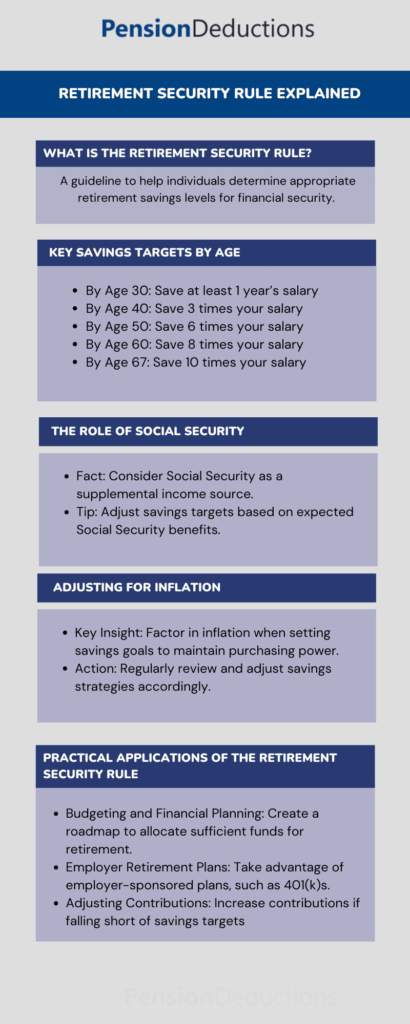Retirement Security Rule: What it is?
What is the Retirement Security Rule?
Background and Development

Key Components of the Retirement Security Rule
Savings Targets
-
By Age 30
Aim to have saved at least one year’s salary.
-
By Age 40
Aim to have saved three times your annual salary.
-
By Age 50
Aim to have saved six times your annual salary.
-
By Age 60
Aim to have saved eight times your annual salary.
-
By Age 67
Aim to have saved ten times your annual salary.
Adjusting for Inflation
The Role of Social Security
Practical Applications of the Retirement Security Rule
Budgeting and Financial Planning
Employer Retirement Plans
Adjusting Contributions
Schedule a Free Consultation Now!
Challenges in Implementing the Retirement Security Rule
Economic Uncertainty
Debt Management
Financial Literacy
The Importance of Professional Guidance
Customizing Retirement Plans
Staying Informed
Conclusion
Embracing the principles of the Retirement Security Rule empowers individuals to take control of their financial destinies, ensuring they are well-prepared for a comfortable and secure retirement. Whether you are just starting your career or approaching retirement age, understanding and implementing the Retirement Security Rule can significantly impact your financial well-being. Start today by assessing your savings progress and making the necessary adjustments to achieve your retirement goals.
SHARE THIS POST
Learn the updated 401k contribution limits 2025 and discover advanced savings strategies tailored to high-income professionals.
State-Facilitated Retirement Programs like CalSavers and OregonSaves are expanding access and transforming retirement planning in 2025. Learn More.
Generation X and Retirement: Discover smart strategies to avoid costly mistakes and secure your future with effective financial planning.
Discover the key differences between a Defined Benefit Plan vs 401k, and find the best pension plan for small business owners.



